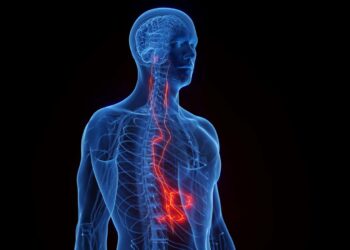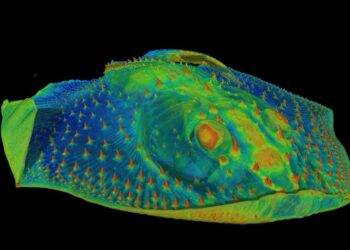During a recent webinar hosted by the Scientific Society of General Medicine, Christophe Scavée, MD, head of the Department of Cardiology and Rhythmology Unit at Cliniques Universitaires Saint-Luc, Brussels, Belgium, discussed the critical role that general practitioners (GPs) play in sports screening. He outlined the essential steps GPs should take when patients want to start or resume exercise and when a referral to a cardiologist is necessary. The following summarizes the key insights for ensuring safe sports participation through effective cardiovascular assessment.
Benefits of Exercise
Before addressing the risk factors, Scavée emphasized the benefits of physical activity. “Exercise is the best treatment for cardiovascular ( CV) prevention and mental health. Individuals who exercise several times a week live longer and age in better health,” Scavée stated.
He acknowledged that physical activity could have adverse effects. “Recently, during the Tour of Flanders, two participants in their 50s died following a heart attack. These patients certainly had risk factors. Although exercise is beneficial, sports increase the risk of cardiovascular death during the activity. The role of physicians is to emphasize the importance of engaging in physical activity under the right conditions,” he said.
Scavée explained that CV events can be predicted in two major age groups. Before the age of 35 years, acute CV events are extremely rare — approximately 1 in 100,000-200,000 — in individuals with genetic heart diseases. After the age of 35 years, CV events are often caused by atherosclerosis and ischemic heart disease.
This trend highlights the need for early risk assessment, which often begins in primary care.
“Still, cases of heart attacks in patients in their 20s are increasing. These often occur because risk factors have gone undiagnosed, such as familial hypercholesterolemia, smoking, and drug use,” he noted.
Risk Assessment
Scavée outlined three critical questions that GPs should ask when evaluating patients’ readiness for physical activity and raising awareness of risky behaviors.
1. Does the individual have a history of CV disease?
Does the individual have a history of ischemic disease, cardiomyopathy, valvular heart disease, arrhythmia, or pacemaker implantation? The answers to these questions will determine how an individual is directed toward a particular sport at a particular intensity and level.
2. What type of sports does the patient want to participate in?
Men in their forties and fifties are taking on new sporting challenges and setting ambitious fitness goals without adequate preparation. Whether aiming for a 20 km run or an ultramarathon, the intensity of the activity must be evaluated carefully. Moreover, intensity is not inherent to sports but to the individual’s goals. You can cycle or run at low, medium, or high intensities.
3. Under what conditions will sports be performed?
Environmental factors such as temperature, humidity, air pollution, and altitude can significantly affect safety during physical activity. Special caution is required in aquatic activities because even minor discomfort can lead to drowning.
Key Steps
Discussing risk factors with patients is essential; however, a history of a heart attack does not necessarily mean that patients should avoid more intense physical activity.
“Studies show that individuals who want to engage in physical exercise on the weekend or more intense sports, provided individuals are trained properly beforehand, have a CV risk that is only slightly higher than that of individuals who have never had a cardiac event. It is important to be cautious, but not to overreact,” said Scavée.
The first key step for GPs is to take a detailed medical history.
“Screening for family history is particularly important,” emphasized Scavée.
It is essential to know an individual’s medical history and risk factors. Cholesterol and blood sugar levels should be checked if they have not been previously assessed.
Discussions about alcohol consumption and doping substances are also necessary; for instance, smoking just 30 minutes before running significantly increases the risk for coronary artery disease.
Symptoms other than chest pain, syncope, or loss of consciousness during exercise should not be overlooked. “I hate it, it is never normal,” Scavée warned.
“If an athlete says they feel weak and senses something has changed, believe them and proceed with an evaluation. If they use a smartwatch, reviewing their data can be extremely useful,” he added.
For patients wanting to return to sports who have no prior assessment and believe they are asymptomatic, a simple question can help: Can you climb a few flights of stairs without becoming breathless?
“Physical capacity is an excellent indicator of resistance to effort and the risks involved in resuming sports,” he said.
Scavée also recommended calculating the Systematic Coronary Risk Evaluation 2 (SCORE2) in individuals. The SCORE2 estimates the 10-year risk for CV events and mortality in individuals.
“This should be applied to all patients consulting about resuming or continuing physical activity,” he advised.
Individuals are then categorized into three risk levels — low, moderate, or high —based on factors such as age, sex, blood pressure, and non–high-density lipoprotein cholesterol levels. A comprehensive CV assessment in high-risk patients should be performed before providing them with an answer.
During clinical examinations, GPs must measure blood pressure and heart rate and auscultate heart murmurs, such as those caused by aortic stenosis, mitral regurgitation, aortic insufficiency, and aortic coarctation.
Should an ECG always be performed? Opinions vary. “It is particularly recommended for young elite athletes,” said Scavée. “For amateurs, it depends on the intensity of their activity. Personally, I recommend it in most cases, as it provides valuable information, and it is not something that will strain the healthcare budget.”
According to Scavée, GPs should refer patients to cardiologists in the following situations:
- Need an ECG if the GP does not have one
- Presence of a murmur
- Physical exam findings are suggestive of Marfan syndrome
- Hypertension
- High-risk SCORE2 results
- Abnormal ECG findings
- Exceptional sports goals, such as climbing Mount Everest.
Although stress tests are useful for high-risk patients, they are not always the best solution.
“A stress test should be performed for high-risk individuals. For a test to be positive, the patient must have ischemia. However, most athletes have soft, non-stenosing carotid artery plaques that are not associated with ischemic events. Stress tests can also provide false reassurance. Stress tests remain useful for unwell individuals but not for those who may suddenly become ill. Therefore, these findings should be combined with imaging. Of course, it is up to the cardiologist to decide what is necessary,” explained Scavée.
Scavée recommended a calcium score scan for athletes or amateurs aiming for more intensive activities.
“It takes 5 minutes, requires no injections, and is inexpensive. It is not recommended for all athletes but becomes particularly useful after 50 years of age,” Scavée said.
This scan identifies coronary artery calcifications. A score above 300 warrants a referral to a cardiologist for further evaluation.
“This indicates coronary artery disease that requires close monitoring,” he noted.
Scavée concluded by highlighting situations in which a GP should advise against continuing or resuming physical activity.
If unsure, the GP should recommend temporarily stopping the activity and consulting a cardiologist and/or sports physician.
“It is important to explain things clearly to the patient. Just because the tests did not detect a disease or no immediate major risk was identified does not mean that there is no risk. We must continue to encourage sports, particularly among stable and healthy individuals. Known risk factors should be assessed and managed appropriately,” Scavée concluded.
This story was translated from MediQuality.
Source link : https://www.medscape.com/viewarticle/how-general-practitioners-can-safely-guide-patients-back-2025a1000cs5?src=rss
Author :
Publish date : 2025-05-21 05:25:00
Copyright for syndicated content belongs to the linked Source.














